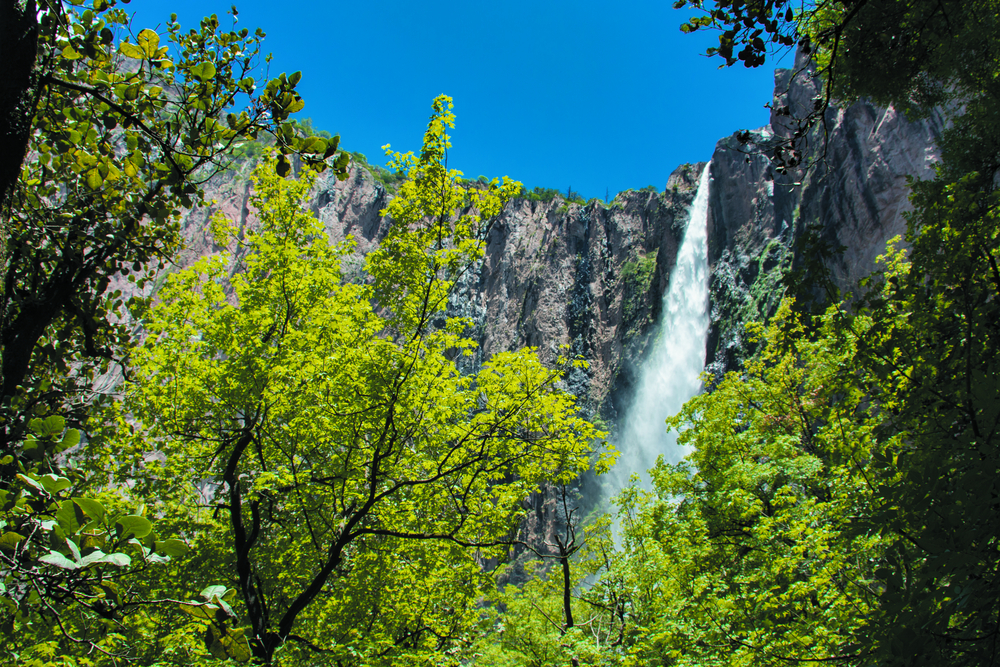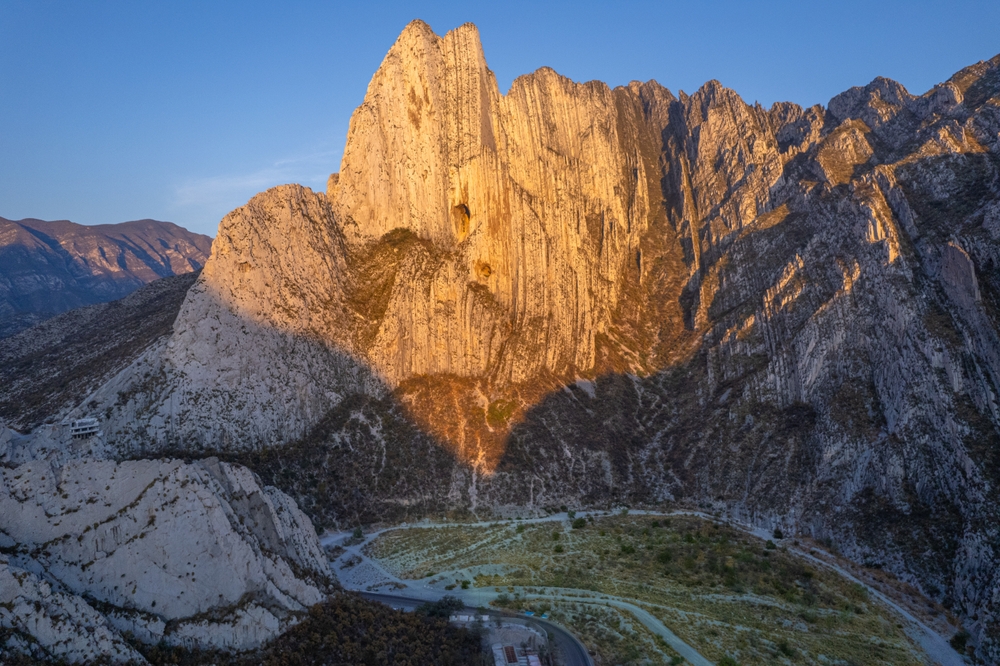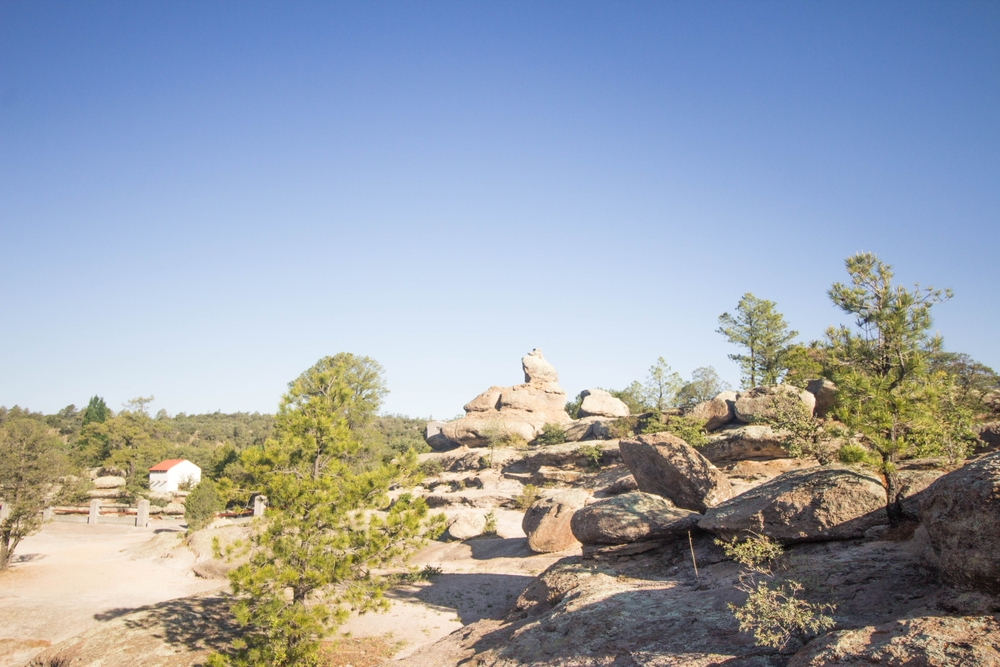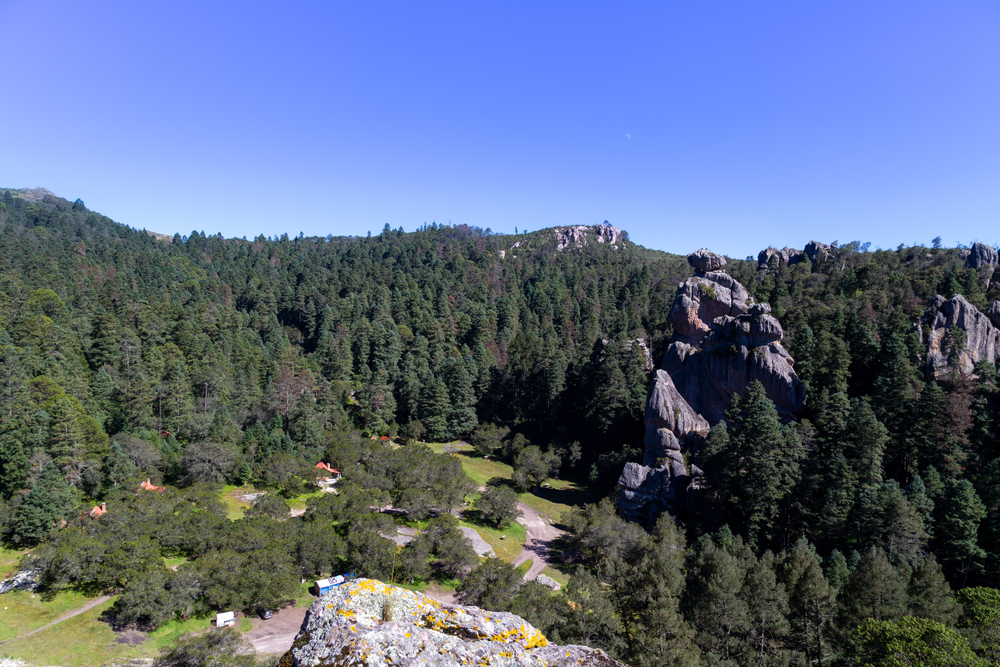El Gogorrón Overview
El Gogorrón National Park, known locally as Parque Nacional Gogorrón, is a vast protected area located in the state of San Luis Potosí, Mexico. Established in 1936, the park covers approximately 380.1 square kilometers (about 146.7 square miles) and lies about 40 kilometers south of the city of San Luis Potosí.
This region is part of the Sierra Madre Oriental and is surrounded by the Bernalejo and La Cuesta mountain ranges, with the nearby Altamira River adding to its rich geographical features.
The terrain of El Gogorrón National Park is a diverse mixture of valleys, mountains, and unique rock formations. One of the most prominent elevations in the park is Picacho de Bernalejo, a striking mountain that rises majestically above an area filled with column-like rock structures.
Another remarkable formation is “La Ventana,” a large natural rock opening that frames panoramic views of the surrounding mountainous landscape. The park’s vegetation is equally varied, featuring forests of pine (Pinus cembroides and Pinus montezumae) and oak (Quercus spp.), as well as extensive areas of mesquite trees and various species of prickly pear cacti (Opuntia spp.). This combination of flora creates a rich and diverse ecosystem that supports a wide range of wildlife.
The park is home to a variety of wildlife, including mammals such as the coyote (Canis latrans), bobcat (Lynx rufus), white-tailed deer (Odocoileus virginianus), and raccoon (Procyon lotor). Among the bird species, notable ones include eagles, quails, and doves.
Reptiles are also present, with species such as the black-tailed rattlesnake (Crotalus molossus) and various boas inhabiting the area. This diverse fauna offers visitors the chance to observe a wide range of species in their natural habitat, making the park a prime destination for wildlife enthusiasts and bird watchers.
One of the most popular features of El Gogorrón National Park is its natural hot springs, which have been developed into recreational areas such as Parque Recreativo Gogorrón. Here, visitors can enjoy pools fed by these thermal springs, as well as waterslides and picnic areas.
Additionally, the historic Ex Hacienda Gogorrón, which has served as a filming location for various movie productions, offers guided tours that allow visitors to explore the region’s rich history. Another attraction is the El Potosino Dam, an ideal spot for activities like fishing, swimming, and family outings.
Visitors to the park can engage in a wide variety of outdoor activities. Hiking is particularly popular, with trails that wind through forests and canyons, offering breathtaking views and opportunities for plant and wildlife observation. Mountain biking is another highlight, with numerous trails challenging riders of different skill levels.
For those seeking a more immersive experience, designated camping areas allow visitors to spend the night under the stars and enjoy the tranquility of the natural surroundings. Horseback riding is also available, with trails that provide a unique way to explore the park’s diverse landscapes.
In terms of conservation, El Gogorrón National Park has faced challenges, including drought conditions that have led to wildfires, such as the one that occurred in April 2024, resulting in the temporary closure of some park areas.
However, since its establishment in 1936, the park has been a success in protecting diverse ecosystems and promoting sustainable practices. Managed by the National Commission of Natural Protected Areas (CONANP), conservation and restoration initiatives continue to preserve this valuable environment for future generations.














































































